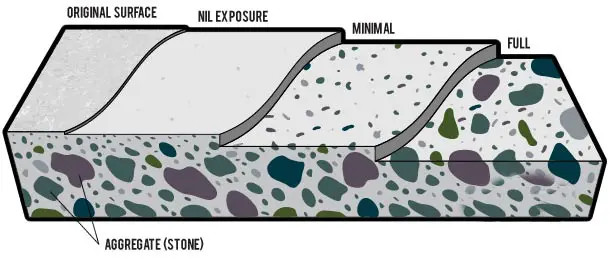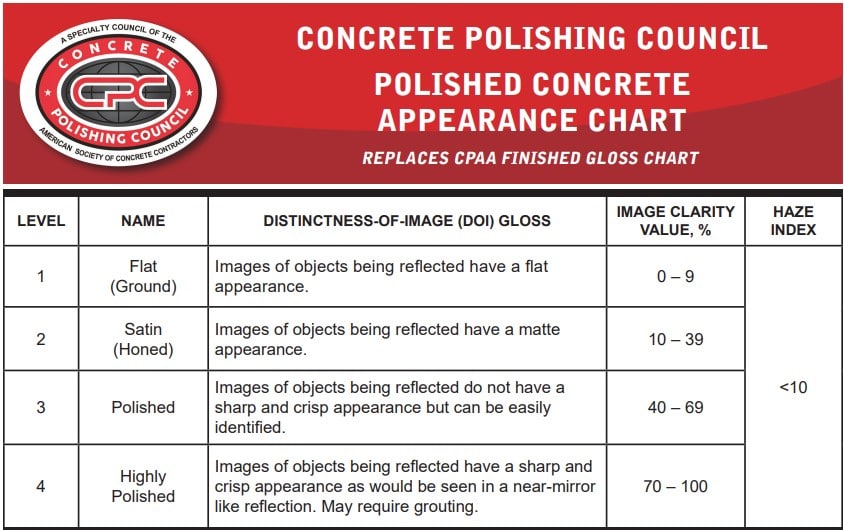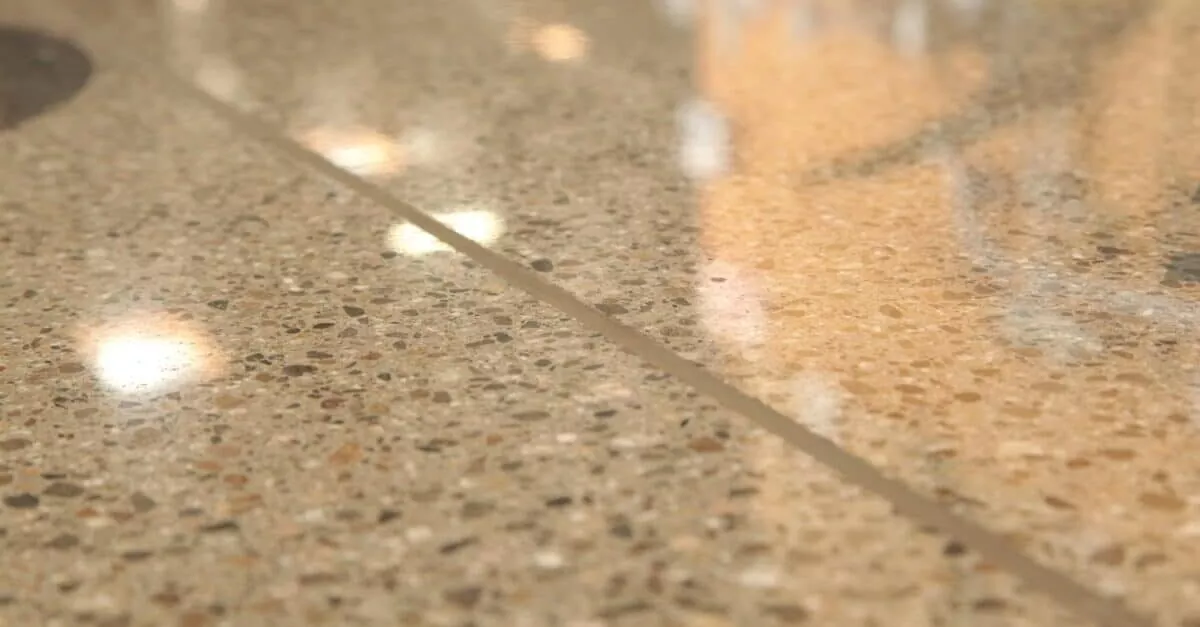What is Coarse Aggregate finish?
Ground and Polished Concrete Finishes
Why do we talk about Exposed aggregate concrete? Because we have to define, this is an appearance that appears by pouring cementitious mix and removing the cement paste top layer. We achieve a coarse aggregate pattern of the batched into the cement mix stones.
Every next pour will differ from the previous one with color variations, cracks, and flatness. To mention, the main goal is to be as flat as possible.

Cement Fines (Class A) – No exposure finishes
As a matter of fact, any client can obtain a no-exposure finish by a very light concrete grinding the surface. This appearance is minimal to no aggregates showing on the concrete surface.
A fascinating fact is that a no-exposure finish requires pouring a perfectly flat surface that might be a challenge. On top of that, it is a great option to hire an experienced concrete contractor to pour and polish the concrete.
This will assure you should have a more controlled entire process. To summary, your chances of achieving an excellent-looking surface without aggregate exposure are pretty high.

Fine Aggregate (Class B)- Minimal exposure finish
Firstly, customers could achieve minimal agglomerate exposure by applying light grinding to the concrete surface to open small amounts of fine aggregate.
Secondly, the salt and pepper finish has some concrete surface spots without exposure, and some might have larger stones. Also, the fine Aggregate (Class B) finish provides a much-loved modern look. Moreover, Class B is lower cost compare to others.
Coarse Aggregate (Class C) – Exposed Aggregate Concrete
In fact, a layer below the salt and pepper and cream made from coarse aggregate within the concrete batch. To reach this layer, you have to remove 1/8 – 1/4″ from the surface, grinding the top two layers.
Surely, this method should start immediately after concrete has been poured within 3 days to get the desired aggregate exposure. As a result, course aggregate occurs in 3 sizes: large, medium, and small. Also, with a full aggregate exposure, you should see all the rocks on the surface.
Lastly, coarse agglomerate or exposed aggregate finish is a popular choice in residential, retail, and dining areas for its unique decorative and stylish look. On top of that, it is the most expensive technique, as more labor is involved and needs heavier grinding.
Is Exposed Aggregate Concrete expensive?
Now, which of these three is more budget-friendly? Concrete Polishing basic costs anywhere from $3 to $6 square foot. Class B is a higher price range and more expensive than Class A.
Finally, it would be best if you also considered that cream polishing is not expensive. Thus, you should expect a larger budget of exposed stones polished finish to its higher labor costs.
To sum up, fine agglomerate surface polishing pricing starts at $4-5 per sqft. Therefore, an exposed aggregate finish from $8-10 per sqft. Lastly, the pricing will depend on the appearance, concrete quality, location, and size.

Polished Concrete Aggregate Exposure Chart
The elimination of the medium aggregate surface exposure level and the approximate surface cut depths for all classes. New classes with more exact percentage ranges are used to measure exposed aggregate.

Polished Concrete Appearance Chart
This chart dispenses with using the finished gloss have the floor as a measurement. The revised chart instead uses Distinctness-of-Image (DOI) and a haze index as measures to determine the finished appearance of a floor.
Please fill in the Form if you’re require a Free Estimate.
–
